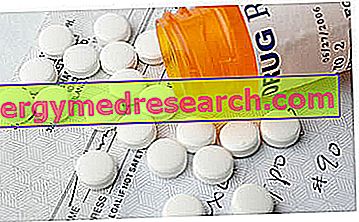Definition
Cardiac myxoma is a benign tumor.
This disease originates from the transformation of the cells of the heart itself (the neoplastic process is, therefore, primitive) and represents 50% of all the tumors that can affect this organ.
The cause is not yet clear, but myxomas probably originate from undifferentiated mesenchymal cells present in the heart muscle.
The myxomas predominantly begin in the left atrium, but they can also be located in the other cavities of the heart (in the right atrium and, rarely, in the ventricles), developing as a solitary tumor or, less often, in multifocal form.
The myxoma is presented as a roundish, very vascularized mass, with a solid or gelatinous consistency, which can reach discrete dimensions (4-8 centimeters in diameter). The surface of this tumor can be: smooth, compact and lobular, or friable and irregular.
Usually, tumors of the left atrium originate from the endocardium, on the edge of the oval fossa (area located on the septum that separates the two atria), and are solid; in about 75% of cases, these masses are pedunculated and can prolapse through the mitral valve orifice, hindering ventricular filling during diastole. Less commonly, myxomas are sessile, therefore they are attacked through their own peduncle with a large implant base.
Most common symptoms and signs *
- Anemia
- Anorexia
- Arrhythmia
- Ascites
- Asthenia
- Increase in the ESR
- Chills
- Cachexia
- Cardiomegaly
- palpitations
- Swollen ankles
- Dysphagia
- Dyspnoea
- Distension of the neck veins
- Drumstick fingers
- Chest pain
- Articolar pains
- Muscle pains
- Edema
- Hemoptysis
- Temperature
- Swollen legs
- Hypotension
- orthopnea
- Pallor
- Weight loss
- petechiae
- thrombocytopenia
- Paradoxical pulse
- Water retention
- Raynaud's syndrome
- Heart murmur
- Drowsiness
- Night sweats
- Fainting
- Tachycardia
- Cardiac tamponade
- Cough
- Pericardial effusion
- Dizziness
Further indications
The clinical presentation of myxomas is variable: the symptoms can appear constantly or appear suddenly, especially in relation to taking particular body positions. In particular, constitutional symptoms, obstruction of blood flow at the level of the heart valves and embolic phenomena can be observed.
Cardiac myxoma can lead to chest pains, breathing difficulties, an irritated cough, peripheral edema and easy fatigue. Constitutional symptoms also include fever, drowsiness, arthralgia, muscle weakness, difficulty swallowing and general decay, with weight loss and skin pallor. In addition, anemia (often haemolytic), Raynaud's phenomenon and drumstick fingers (digital hippocraticism) occur.
Mechanical symptoms (eg dyspnoea and thorachalgia) result from compression of the heart or coronary chambers, and from irritation or tampering caused by growth or hemorrhage of the myxoma within the pericardium.
Irregular and friable myxomas increase the risk of a systemic embolism; fragments or thrombotic material can become detached from neoplastic masses present in the right or left part of the heart, respectively reaching the lungs or peripheral organs (such as the brain, coronary arteries, limbs, kidneys and spleen).
On the other hand, interference with valve function can cause pulmonary edema, respiratory failure and signs of mitral stenosis. Myxomas can also cause arrhythmias. The picture can be complicated with heart failure, valve insufficiency and coronary artery disease.
The presence of a cardiac myxoma is confirmed by echocardiographic examination, imaging techniques (angiocardiography, chest radiography, computed tomography and magnetic resonance) and tissue typing by endomyocardial biopsy and cardiac catheterization.
Treatment of benign cardiac tumors involves surgical resection. This approach is usually decisive, but after the operation, the patient must undergo regular echocardiography to monitor any recurrences.



